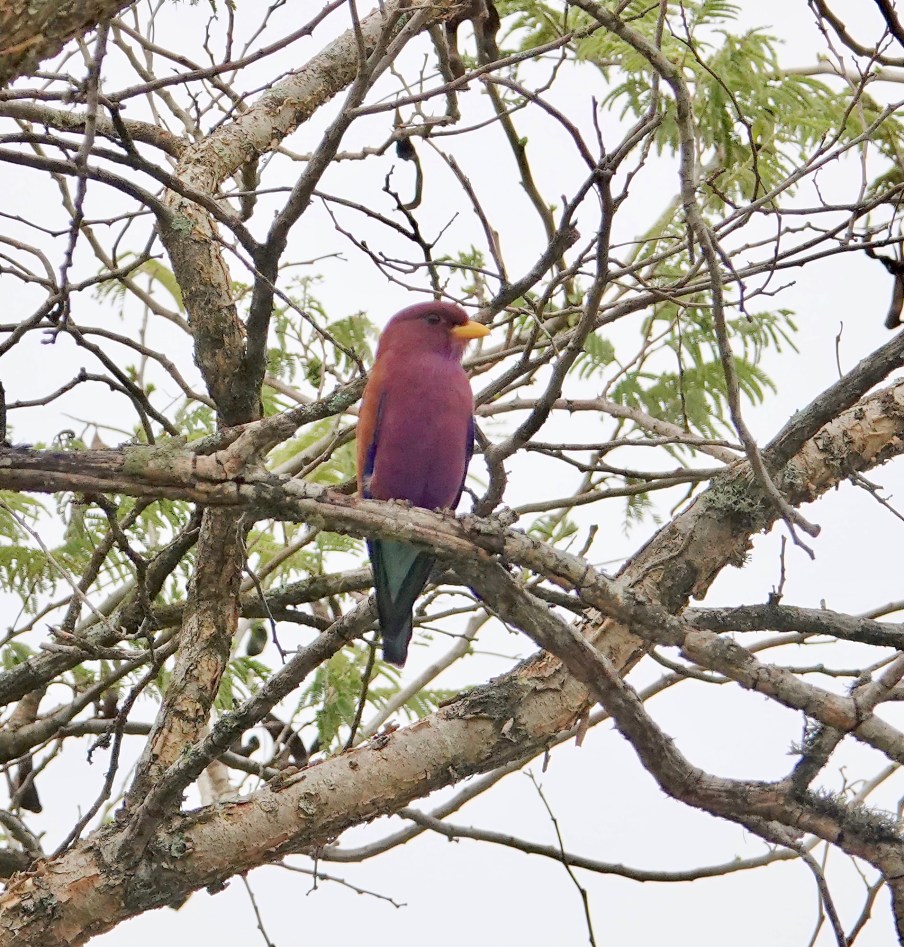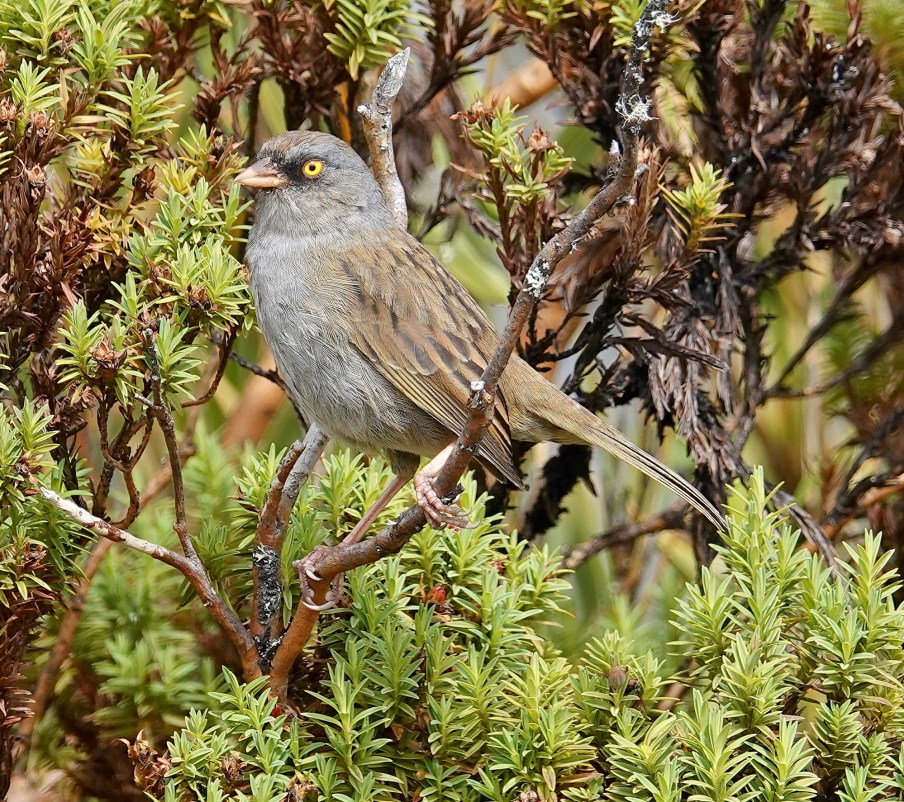Monthly Archives: February 2023
Emerald Toucanet
Emerald Toucanet: Miriam’s Quetzals, San Geraldo de Dota, Costa Rica, December 2022 — We all jumped up from our delicious lunches at Miriams when this Emerald Toucanet visited the feeders out back. The feeder pole is about 12 feet from the deck rail, so this was a real treat. Sony Rx10iv at 600mm equivalent. Program mode with my custom birds and wildlife modifications. Processed in Pixelmator Photo and Apple Photos. ISO 100 @ f4 @ 1/500th.
Uganda Edition: Immature Bateleur

Immature Bateleur: Lake Mburo National Park, Uganda, August 2022 — I mentioned when I last posted an immature Bateleur, that though we saw NO adults, we saw a lot of immatures. We kept looking, but they were all immatures in 2022. This one sat long enough for us to circle around the tree for a better shot…though still not good light. Sony Rx10iv at 591mm equivalent. Program mode with my custom birds and wildlife modifications. Processed in Pixelmator Pro and Apple Photos. ISO 100 @ f4 @ 1/500th.
Uganda Edition: Red-necked Spurfowl
Red-necked Spurfowl: Lake Mburo National Park, Uganda, August 2022 — We were walking. The Spurfowl was walking. Our path’s crossed…much to our delight…but I don’t think the Red-necked Spurfowl was all that impressed. 🙂 Relatively common in Southern Uganda and the southern half of East Africa. It only comes up into Kenya along the Ugandan border and up the coast. It has a strange distribution in Southern Africa as well, all the way down to the cape. It is also found in a strange set of habitats: savanna, forest edge, cultivated fields, etc. And there is a good deal of geographic variation in the plumage…but always with the bare red throat. Sony Rx10iv at 591mm equivalent. Program mode with my custom birds and wildlife modifications. Processed in Pixelmator Photo and Apple Photos. ISO 500 @ f4 @ 1/500th.
American Tree Sparrow

American Tree Sparrow: Kennebunk, Maine, USA, February 2023 — Something different on the deck yesterday in our intermittent snow. Even Carol thought it might not be a Chipping Sparrow (which should not be here now…in middle of a snowstorm…anyway). I actually had to look it up, after taking a few photos through the glass of deck door…that is how rarely we have seen one in the yard over the going-on 30 years we have lived in Southern Maine. We don’t get the flocks by the roadside that are common south of us in winter. Just a single bird on very rare occasions. Nice to see though. We have more snow predicted for Wednesday. I will have my eye out! Sony Rx10iv at 500mm equivalent. Program mode with my custom birds and wildlife modifications. Processed in Pixelmator Pro and Apple Photos. ISO 200 @ f4 @ 1/500th.
Uganda Edition: Broad-billed Roller

Broad-billed roller: Lake Mburo National Park, Uganda, August 2022 — the “other” Roller common in Lake Mburo, perhaps even more common than the Lilac-breasted. Not, to my eye, quite so exciting, but a Roller non-the-less. I have yet to see one in flight, so I have not been able to fully appreciate the blue rump and tail. This is another shot from our walking safari on what turned out to be a somewhat cloudy early morning in Lake Mburo. Sony Rx10iv at 600mm equivalent. Program mode with my custom birds and wildlife modifications. Processed in Pixelmator Pro and Apple Photos. ISO 500 @ f4 @ 1/500th. Plus 1.7EV for backlight.
Acorn Woodpecker

Acorn Woodpecker: Miriam’s Quetzals, San Geraldo de Dota, Costa Rica — The Acorn Woodpecker is a common woodpecker of the western regions of North America, all through Central America, and down into the north west corner of South America. It is found a higher and higher elevations the further south you go. As you might guess from the name it is closely associated with mixed oak forest and is famous for two things…stashing acorns in telephone poles and tree trunks, and drilling holes in house siding and shingles. They are always active around Miriam’s feeders. Sony Rx10iv at 600mm equivalent. Program mode with my custom birds and wildlife modifications. Processed in Pixelmator Pro and Apple Photos. ISO 100 @ f4 @ 1/1000th.
Uganda Edition: a journey of Giraffes

Nubian Giraffes: Lake Mburo National Park, Uganda, August 2022 — I mentioned the abundance of names for a group of Giraffes a few days ago…journey, kaleidoscope, tower, herd, troop, etc. — this is maybe half of the tower we encountered on our walking safari at Lake Mburo on our last morning in Africa, as they moved slowly away from us. Sony Rx10iv at 83mm equivalent. Program mode with my custom birds and wildlife modifications. Processed in Pixelmator Pro and Apple Photos. ISO 250 @ f3.5 @ 1/200th.
Flame-colored Tanager
Flame-colored Tanager: Miriam’s Quetzals, San Geraldo de Dota, Costa Rica, December 2022 — After a few hours on the Paramo, we headed back for lunch at Miriam’s. There was birding time between ordering and eating, and of course we spent it on her back deck. These female and male Flame-colored Tanagers posed nicely in the mid-day light. Sony Rx10iv at 600mm equivalent. Program mode with my custom birds and wildlife modifications. Processed in Pixelmator Pro and Apple Photos. ISO 100 @ f4 @ 1/500th.
Uganda Edition: Giraffe head shots
Nubian Giraffe: Lake Mburo National Park, Uganda, August 2022 — Still with the small tower of Giraffes we encountered on our walking safari with an armed ranger at Lake Mburo. A few portraits. You can see how delicately they strip the new growth leaves from the tops of the acacia trees…pulling them off without catching the thorns. Their browsing is what gives the acacias of Africa their characteristic shape. Wonderful creatures! Sony Rx10iv at 600mm equivalent. Program mode with my custom birds and wildlife modifications. Processed in Pixelmator Pro and Apple Photos. ISO 1000 @ f4 @ 1/500th.
Volcano Junco

Volcano Junco: Cerro de la Muerte, Costa Rica, December 2022 — And this, for a birder, is why you drive up the road to the antenna station at the top of Bueno Vista mountain and get out at 11,400 feet in whatever weather the day provides and walk around the roads through the paramo. The Volcano Junco is a regular around the lower buildings at the station. We worked harder for this one than for most…generally they are on the ground behind the buildings in plain sight. This was one of several skulking deeper in the brush and only coming out to the road about when were ready to give up. Still it gave us great views. Of the other birds of the paramo, the Volcano Hummingbird and the Timberline Wren, we got the hummer and dipped on the wren (that makes two years in a row we have missed the wren). I have only ever seen the Peg-billed Finch once there. Still, it is always good to see the Volcano Junco, a bird that is restricted in range to the tops of the highest mountains in Costa Rica, and can be seen nowhere else in the world. Sony Rx10iv at 517mm equivalent. Program mode with my custom birds and wildlife modifications. Processed in Pixelmator Pro and Apple Photos. ISO 100 @ f4 @ 1/500th. (I have heard at least 3 different stories as to why the mountain is called Cerro de la Muerte…mountain of death…but none of them are particularly convincing…certainly on a clear day Bueno Vista is a better name.)










